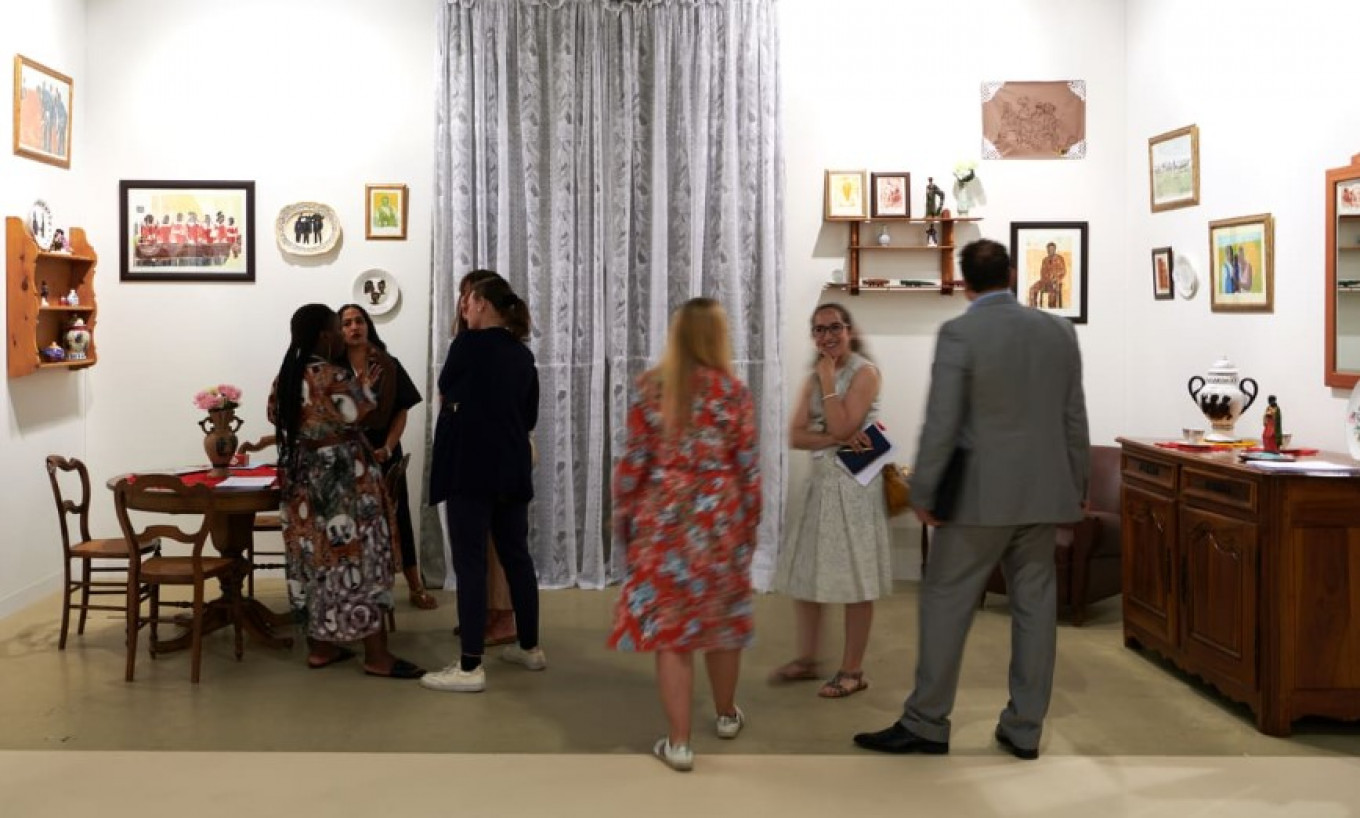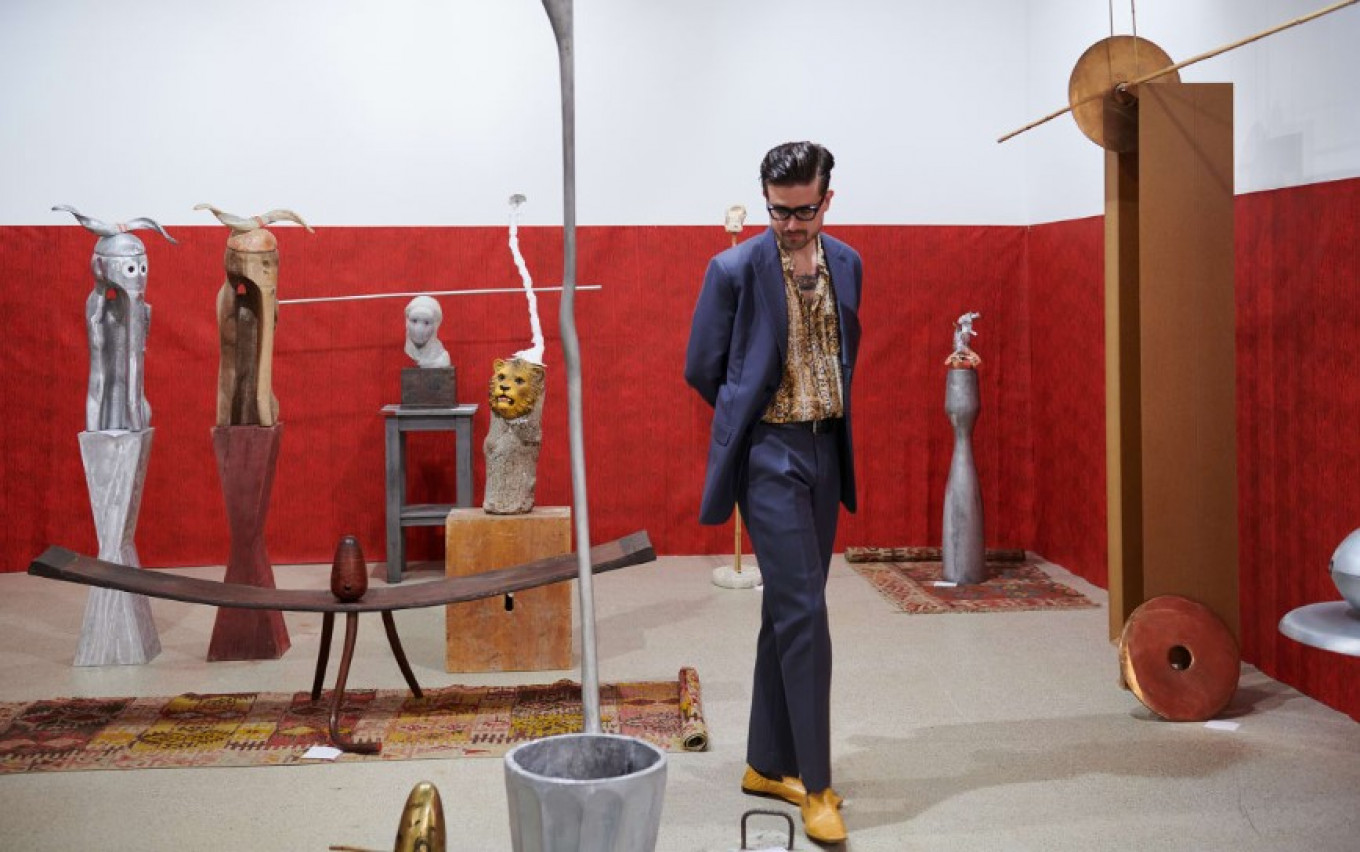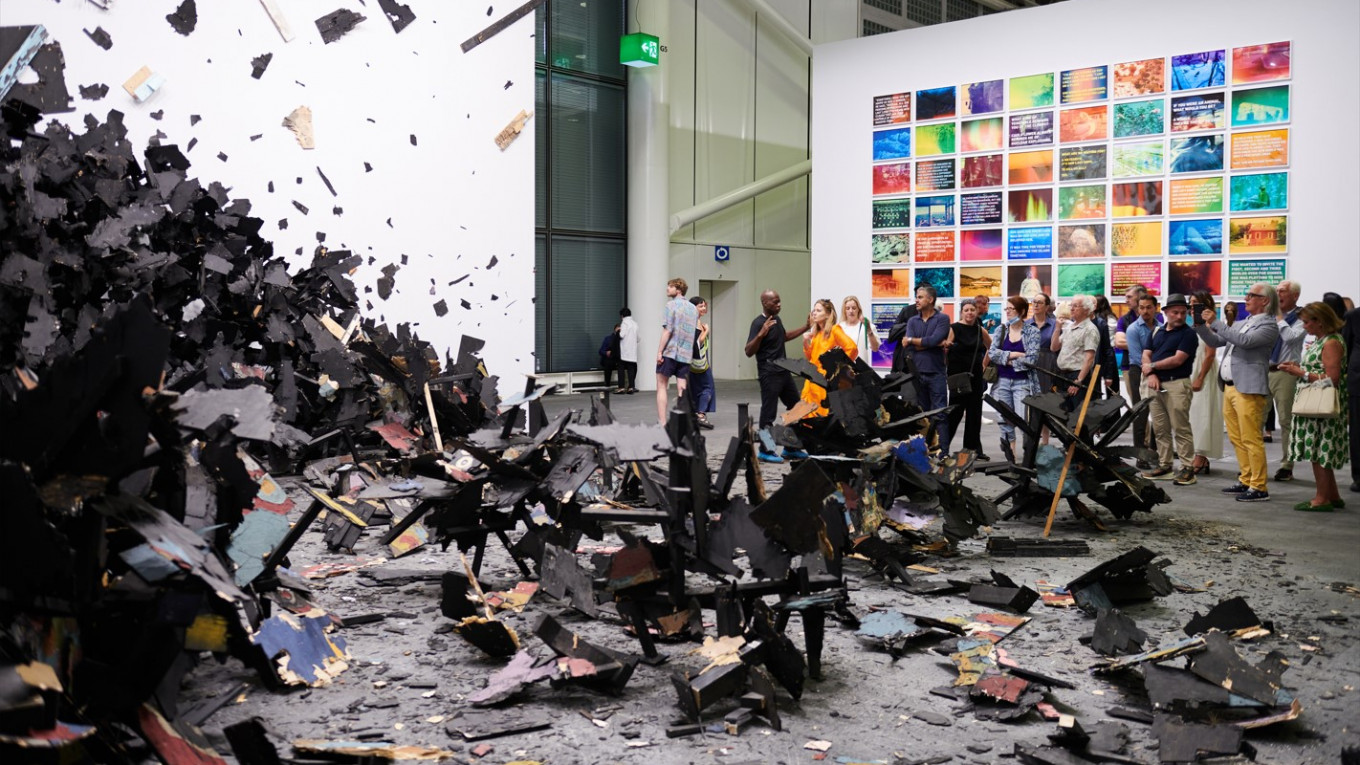A really hot art summer has come to Europe.
Right after the 59th Art Biennale in Venice and the Documenta 15 exhibition of contemporary art in Kassel, the world’s biggest international art fair was held in late June: Art Basel. The fair showcased modern and contemporary works in 289 galleries and attracted famous collectors and art lovers from all over the world.
Previews for VIPs begin a few days before the official opening, and for an entire week, a small Swiss town on the border of Germany and France turns into an art center with shows covering fine art, design, and photography. There is also a special film program as well as numerous exhibitions in individual museums.
This year Russian galleries were not banned, but none applied to exhibit. International stands exhibited works by some contemporary and classic Russian artists. For example, paintings by Marc Chagall were on sale in German, Canadian and Swiss galleries; a work by a contemporary Russian sculptor Vasily Klyukin was on sale ($35,000) at the London-based Gallery Simon Lee.
Outside the main fair, there were projects including one by a St. Petersburg artist based in Portugal – known under the pseudonym Kuril Chto. His installation “Goods ” in a gallery-showcase behind the Basel railway station was a collection of washing machines and microwave ovens sent home by Russian soldiers fighting in Ukraine.
Fabienne Levy, a gallery owner from Lausanne, rented a space and alternately showed exhibitions of Ukrainian and Russian artists. Three Russian gallerists, based mostly in Europe, worked on the Russian part: Daria Lobyntseva, founder of the Basel-based gallery Voskhod, Yana Tibben, who launched the Art Catch Gallery project in Utrecht, and Anna Merman. The exhibition called X Nowness was attended by 38 artists, including Dmitry Bulnygin, Anton Kushayev, Maxim Ksuta and Ustina Yakovleva. The 27-year-old artist Natalia Goncharova, who left for Istanbul after the start of the war, created a large-scale diptych where a half-naked female figure calls people to battle. Watercolors by the conceptualist Masha Sumnina depicted food cans with the inscription "when the expiration date is reached, everything will fall into place."
Although Art Basel was never known for its Russian galleries, some Russian buyers usually came with heavy wallets. A few serious buyers could be seen in the halls and corridors this year, although more often than not they acquired works of art through intermediary consultants, mainly from the U.S. and U.K. This year there weren’t many Russian collectors at all, presumably due to difficulties with international travel and, in some cases, Western sanctions.

Meanwhile, Russian art
This year most Russian artists had to make do with an alternative art event in St. Petersburg, which opened under the title “Modern Art Fair of 1703.” Named for the founding year of the Russian imperial capital, it was sponsored by the Kremlin-linked energy giant Gazprom.
Some participants said that it had been planned long ago, but its opening on the same day as Art Basel does not seem to be an accident. Some artists who did not want to participate had their works exhibited against their will. The video art group AES+F, which cut off all relations with Russian state institutions after the invasion of Ukraine, protested when they heard that Dmitry Khankin, co-founder of the very successful Triumph Gallery in Moscow, had planned to show their works. Tatyana Pinchuk, the director of St. Peterburg’s Street Museum, said that participation was “equivalent to cooperation with the sponsors of the war, and this is like “public agreement with their actions.” Pinchuk was spotted in Basel, where she promoted the project by Kuril Chto.
Art Basel director Marc Spiegler announced a policy of neutrality, at least in relation to opponents of the war. At the press conference two days ahead of the official opening, he responded to the deluge of questions about the impact of the war on art business and Russian participation. He said that he didn’t “believe in discriminating on the basis of nationality or passport.” He added that he was in contact with the Russian art world, and that if in previous years people told him about the “tense situation and the difficulties of self-expression,” now the same people say the situation has become “simply hopeless.”
Art Basel provided both Ukrainians and Russians with a cash donation of $113,000 to be split evenly with three humanitarian aid organizations supporting victims of the war against Ukraine. Part of the funds were also used to support a performance by the Russian punk collective Pussy Riot. On June 14, about 400 people gathered at Basel’s Kaserne to watch the girls from Russia rock out punk music with appeals like, “We are living in the Russian Revolution. The one in 1917? No, the one happening right now.” As the concert showed, Pussy Riot is not famous for its music but for its attacks on the Russian authorities and their numerous detentions and jail terms.

Meanwhile, Ukrainian art
This year, two Ukrainian galleries, the Naked Room and Voloshyn, were invited to the Liste Art Fair, an event run in parallel with Art Basel. Liste Art Fair is an independent space for younger gallerists and serves as a springboard for galleries aiming to enter elite art. The galleries were accepted when two Russian galleries in Moscow and New York canceled due to the war in Ukraine.
The Ukrainian gallery owners said they’d applied for years but had always been refused. This year not only was their booth price of 7,300 Swiss francs ($7500) paid for by the organizers, but the first large purchase was made at the Naked Room in the first ten minutes of opening. In the end, almost all the exhibited works were sold out before its official opening.
Artistic longevity
As one looks at the art exhibited at these fairs by Russian and Ukrainian artists, one wonders whether their works have the necessary quality that will mature over time, or if they largely appeal to a public in sympathy with the plight of the artists and their countries. Like the émigré artist Sabrina in Milan Kundera's novel “The Unbearable Lightness of Being,” are they welcomed for their art or as artists who “fight for freedom with paintings?”
A Message from The Moscow Times:
Dear readers,
We are facing unprecedented challenges. Russia's Prosecutor General's Office has designated The Moscow Times as an "undesirable" organization, criminalizing our work and putting our staff at risk of prosecution. This follows our earlier unjust labeling as a "foreign agent."
These actions are direct attempts to silence independent journalism in Russia. The authorities claim our work "discredits the decisions of the Russian leadership." We see things differently: we strive to provide accurate, unbiased reporting on Russia.
We, the journalists of The Moscow Times, refuse to be silenced. But to continue our work, we need your help.
Your support, no matter how small, makes a world of difference. If you can, please support us monthly starting from just $2. It's quick to set up, and every contribution makes a significant impact.
By supporting The Moscow Times, you're defending open, independent journalism in the face of repression. Thank you for standing with us.
Remind me later.







